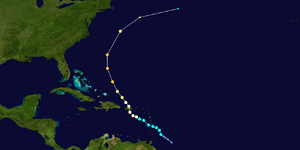Hurricane Francine: Current Updates and Warnings
As the Gulf Coast braces for the impact of Hurricane Francine, the National Hurricane Center (NHC) has issued multiple hurricane warnings and advisories. This storm has rapidly intensified, and residents are urged to stay informed and prepared as it approaches landfall.
Overview of Hurricane Francine
Hurricane Francine, which was previously a tropical storm, has officially been upgraded to a Category 1 hurricane. As of the latest reports, it is located approximately 350 miles southwest of Morgan City, Louisiana. The storm is expected to make landfall along the Louisiana coast within the next 24 hours, bringing with it life-threatening conditions including strong winds, heavy rainfall, and significant storm surges.
Current Warnings and Advisories
Hurricane Warnings:
- A hurricane warning is in effect from Sabine Pass on the Louisiana-Texas border to Grand Isle, which is about 50 miles south of New Orleans. This warning indicates that hurricane conditions are expected within the area.
Tropical Storm Warnings:
- Tropical storm warnings extend eastward from the hurricane warning area, indicating that tropical storm conditions are possible.
Evacuations:
- Mandatory evacuations have been ordered in several areas along the Gulf Coast, particularly in low-lying regions that are prone to flooding.
Impact Predictions
- Wind Speeds: Winds are expected to reach up to 75 mph, with gusts potentially higher as the storm approaches land.
- Rainfall: Heavy rainfall is anticipated, with some areas expecting up to 10 inches of rain, leading to flash flooding.
- Storm Surge: The NHC warns of a dangerous storm surge that could inundate coastal areas, particularly in Louisiana.

Latest News and Updates
National Hurricane Center
The National Hurricane Center has been actively monitoring the situation and providing updates. Their website offers a wealth of information, including:
- Tropical Weather Outlook: Current advisories and forecasts for the Atlantic, Caribbean Sea, and Gulf of Mexico.
- Satellite Imagery: Real-time satellite images showing the storm's progression.
- Hurricane Tracking: Detailed maps and tracking tools to follow the storm's path.
For more information, visit the National Hurricane Center.
Media Coverage
Several news outlets are providing live updates and coverage of Hurricane Francine:
NBC News: Reports indicate that residents are preparing for the storm's impact, with live updates on wind speeds and flooding potential. Read more here.
PBS News: Offers a live map tracking the path of Tropical Storm Francine, detailing the areas under warning. Check the live map.
USA Today: Provides updates on the storm's strengthening and its expected landfall in Louisiana. Read the latest updates.
CNN: Reports on the evacuations and preparations along the Gulf Coast as the storm approaches. Read more here.
Public Safety Measures
Residents in the affected areas are advised to:
- Stay Informed: Regularly check updates from the NHC and local news outlets.
- Prepare Emergency Kits: Ensure you have food, water, medications, and other essentials ready.
- Follow Evacuation Orders: If instructed to evacuate, do so promptly to ensure safety.

Hurricane Francine poses a significant threat to the Gulf Coast, particularly Louisiana. With hurricane warnings in effect and the storm expected to make landfall soon, it is crucial for residents to remain vigilant and prepared. Stay tuned to reliable news sources and the National Hurricane Center for the latest updates and safety information.
For continuous updates, you can follow the live coverage and tracking on various news platforms and the NHC website.





